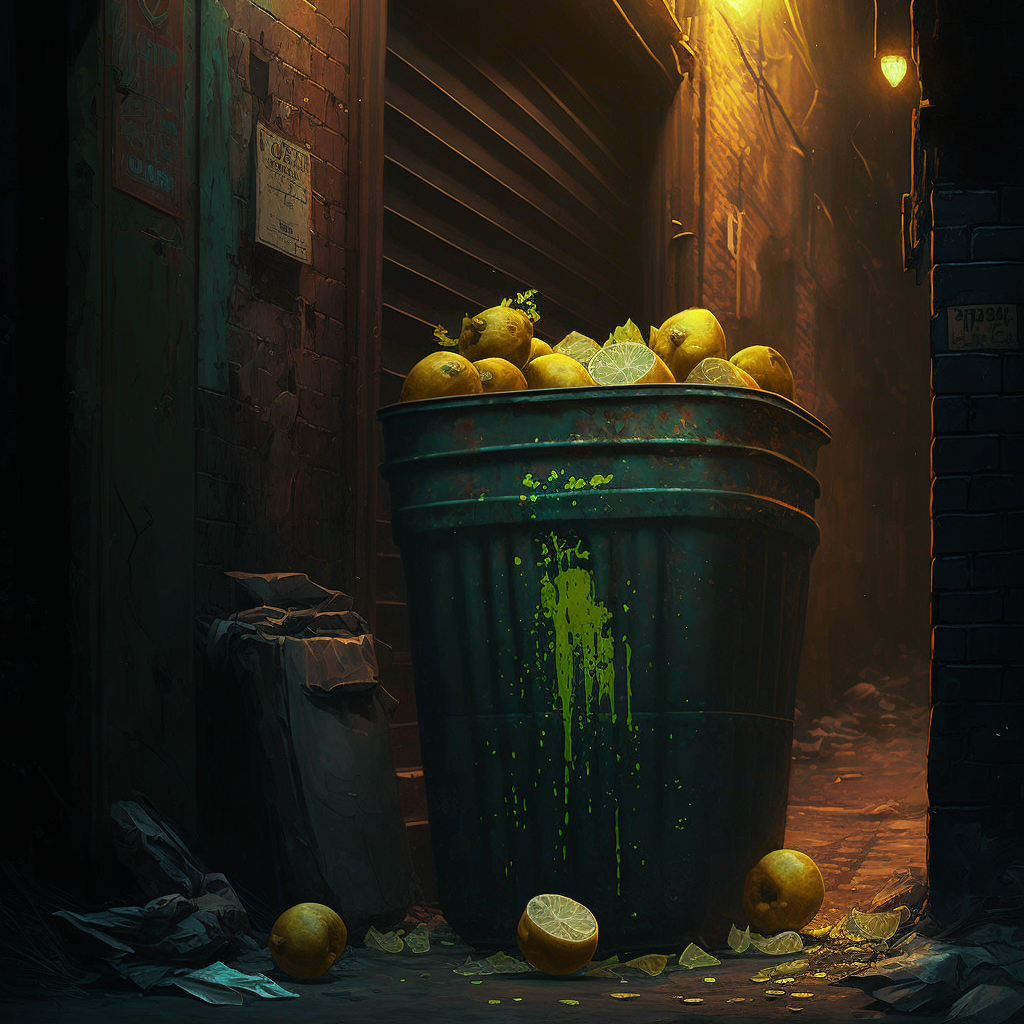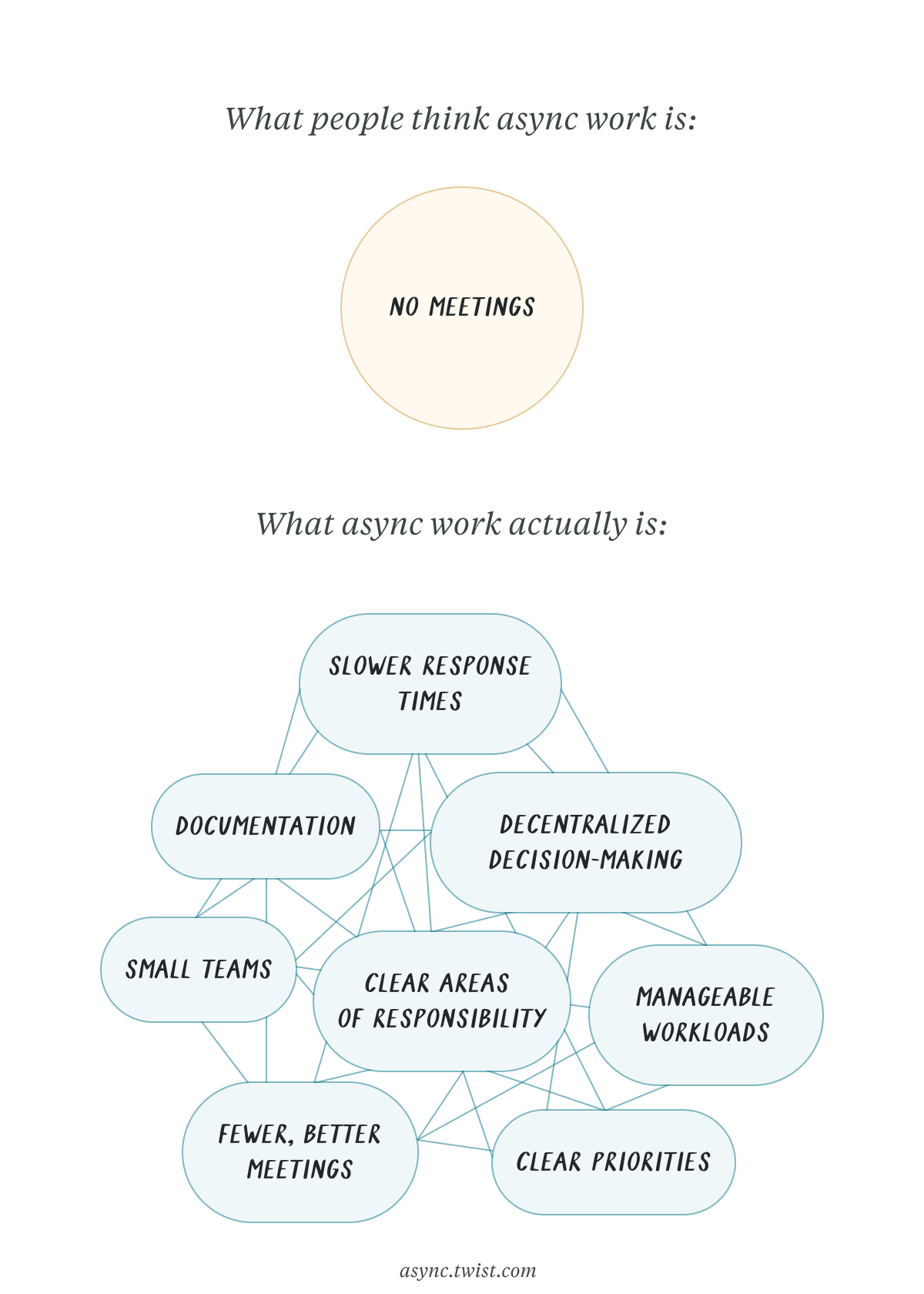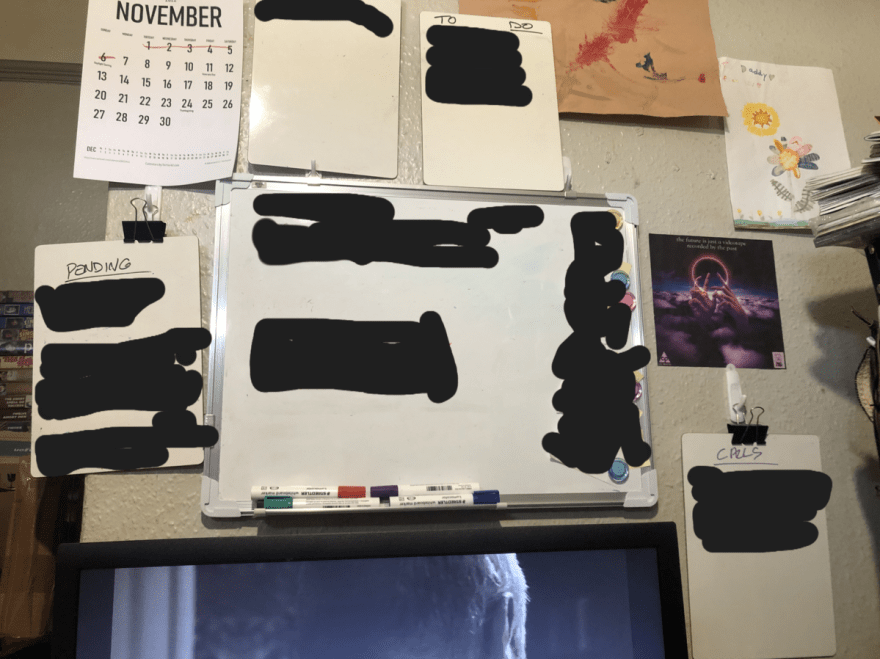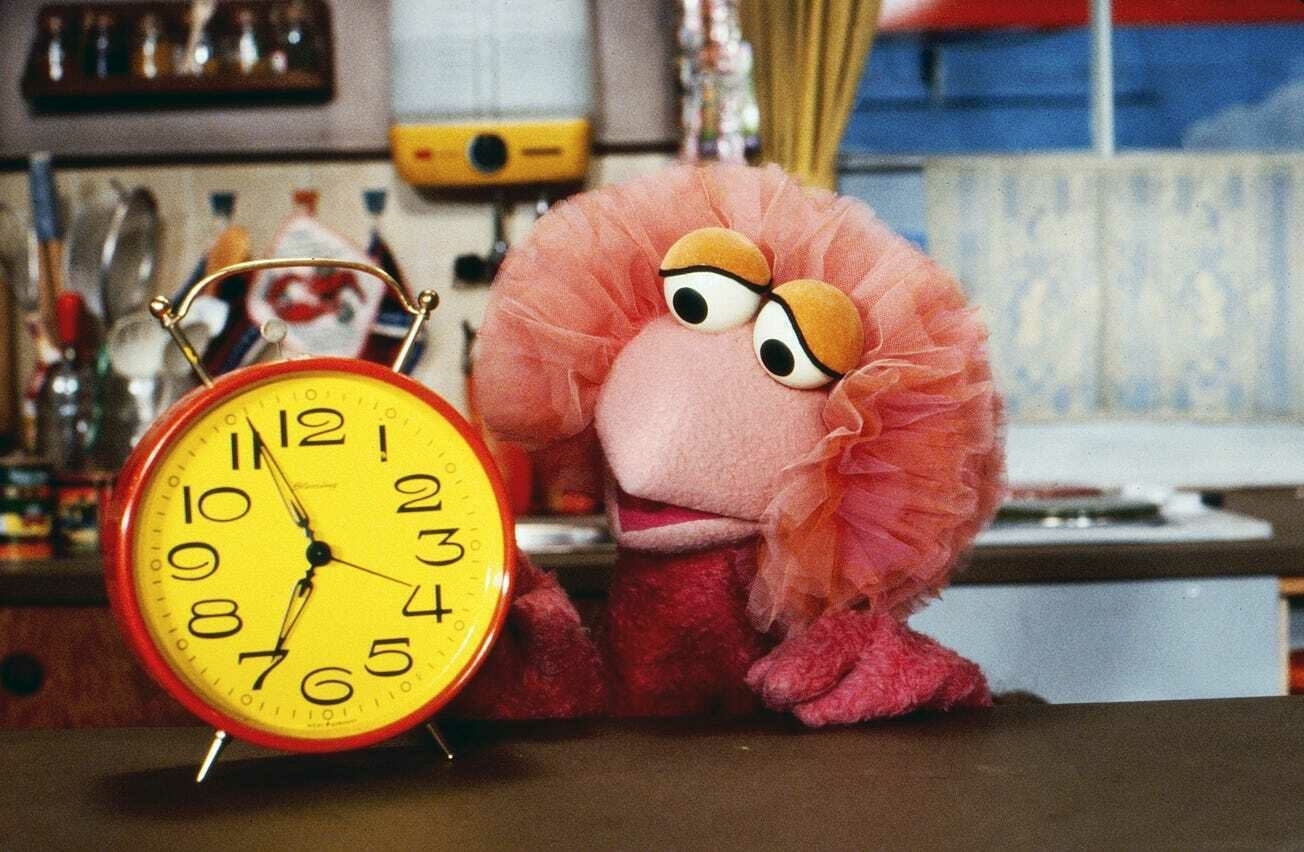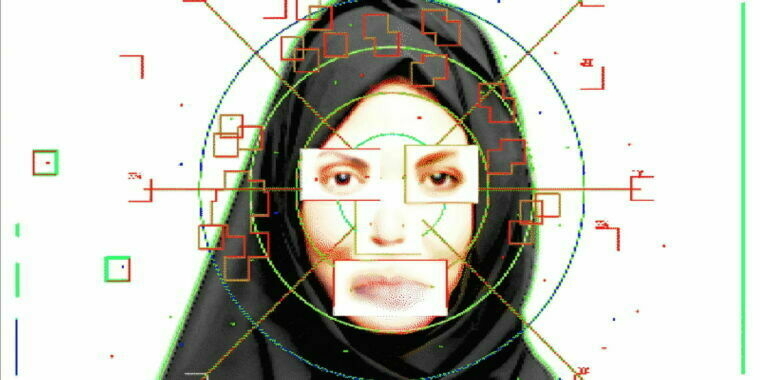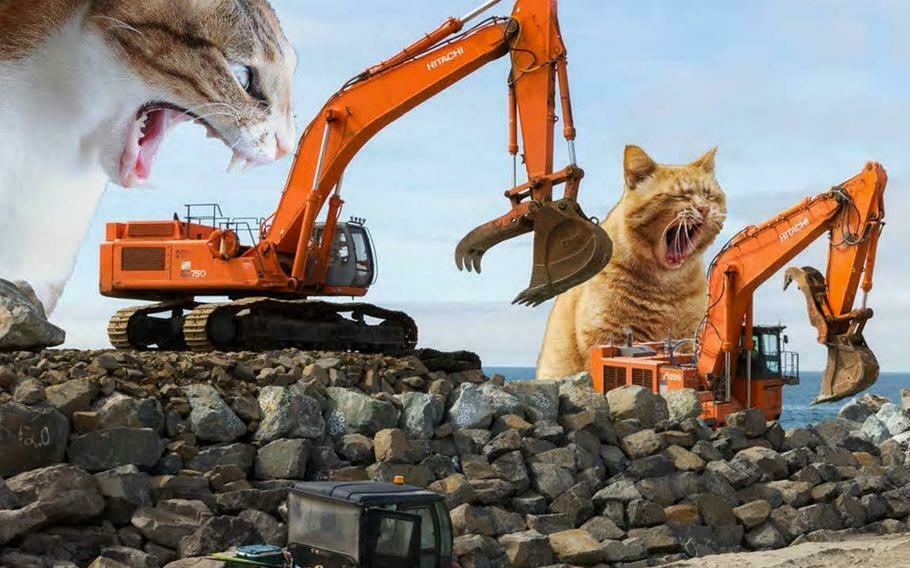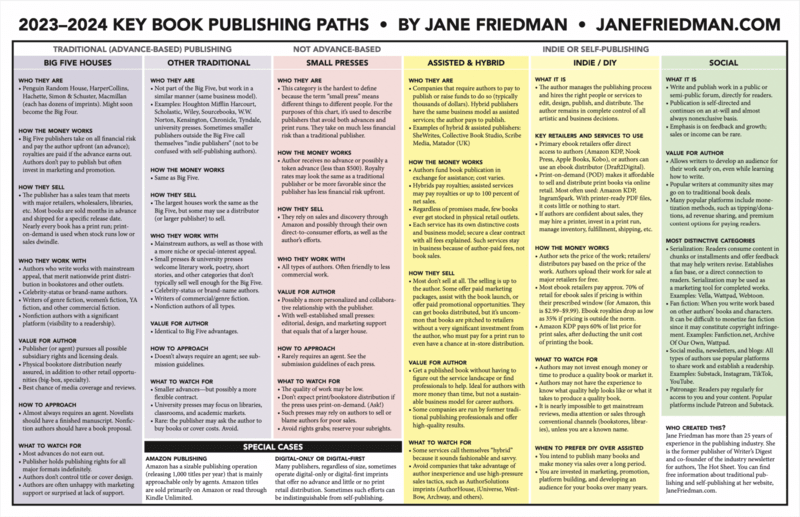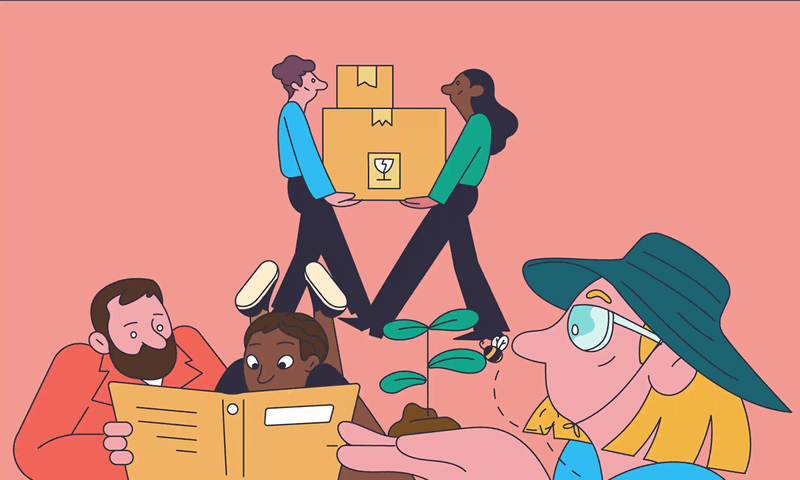Cambrian governance models
I think it’s fair to say that this article features ‘florid prose’ but the gist is that we should want society to be as complex as possible. This allow innovation to flourish and means we can solve some of the knottiest problems facing our world.
However, we’re hamstrung by issues around transnational governance, and particularly in the digital realm.
To summarise, we are traversing an epochal change and we lack the institutional capacity to complete this transformation without imploding. We could well fail, and the consequences of failure at this juncture would be catastrophic. However, we can collectively rise to the challenge and an exciting assemblage of subfields is emerging to help. We can fix the failed state that is the Internet if we approach building tech with institutional principles, and an Internet that delivers on its cooperative promise of deeper, denser institutional capacity is what we need as a planetary civilisation.Source: The Internet Transition | Robin BerjonWe don’t need a worldwide technical U.N. to figure this out. Rather, we need transnational topic-specific governance systems that interact with one another wherever they connect and overlap but that do not control one another, and that exercise subsidiarity to one another as well as to more local institutions. Yes, it will be a glorious mess — a Cambrian mess — but we will be collectively smarter for it.
Tax and/or eat the rich
I’m essentially just bookmarking this in case I think that I’ve misremembered the astounding difference in global wealth between the top 1% and bottom 90% mentioned in this article
The report said that for every $1 of new global wealth earned by a person in the bottom 90%in the past two years, each billionaire gained roughly $1.7m. Despite small falls in 2022, the combined fortune of billionaires had increased by $2.7bn a day. Pandemic gains came after a decade when both the number and wealth of billionaires had doubled.Source: Call for new taxes on super-rich after 1% pocket two-thirds of all new wealth | The Guardian
Logging off from AI?
An interesting and persuasive article from Lars Doucet who considers the ways in which AI spam might mean that people retreat from ‘open sea’ social networks (including gaming / dating ones) to more niche areas.
I don’t think there’s anything particularly wrong with interacting with AIs in ways that include emotion. But it’s a solipsistic existence, and perhaps not one that leads to human flourishing.
What happens when anyone can spin up a thousand social media accounts at the click of a button, where each account picks a consistent persona and sticks to it – happily posting away about one of their hobbies like knitting or trout fishing or whatever, while simultaneously building up a credible and inobtrusive post history in another plausible side hobby that all these accounts happen to share – geopolitics, let's say – all until it's time for the sock puppet master to light the bat signal and manufacture some consensus?Source: AI: Markets for Lemons, and the Great Logging Off | Fortress of DoorsWhat happens when every online open lobby multiplayer game is choked with cheaters who all play at superhuman levels in increasingly undetectable ways?
What happens when, from the perspective of the average guy, “every girl” on every dating app is a fiction driven by an AI who strings him along (including sending original and persona-consistent pictures) until it’s time to scam money out of him?
What happens when comments sections on every forum gets filled with implausibly large consensus-building hordes who are able to adapt in real time and carefully slip their brigading just below the moderator’s rules?
I mean, to various degrees all this stuff is already happening. But what happens when it cranks up by an order of magnitude, seemingly overnight?
What happens when most “people” you interact with on the internet are fake?
I think people start logging off.
Retro audio player
Adam Procter shared this with me recently, after witnessing the trials and tribulations of upgrading an iPod Classic. It’s pretty awesome, I have to say, but I don’t think I’m quite at the stage of custom PCBs quite yet…
Inspired by 1980s tape recorders, this audio player was designed with ease of use and accessibility in mind. Despite its nostalgic appearance, it packs modern hardware. Powered by the ESP32, it plays music and audiobooks from a micro SD card, either on its internal speaker or though a headphone jack. A 2.8“ IPS screen and mechanical buttons make up the simplistic user interface. The software is built around the ESP32-audioI2S library by GitHub user Schreibfaul1.Source: DIY Retro Audio Player | Hackaday.io
Paying less attention to the attention economy
This is a reply from John Udell, a very smart guy I’ve interacted with a few times over the years. He wisely doesn’t link to the post he’s critiquing, primarily because (ironically) it would give more attention to someone he’s suggesting has a problem weaning themselves off the attention economy.
Udell talks about the ‘sweet spot’ on Twitter having been between 200 and 15,000 followers. The most I had was around 14,500 which seemed pretty awesome for a few years. I did notice that number not going up much after 2014.
But, as he says, the point about saying things online if you’re a regular person is hanging out and discussing things. There are absolutely times when you want to shout about things and make a difference, but that’s what boosting/retweeting is for, right?
If you occupy a privileged position in the attention economy, as Megan McArdle does now, and as I once did in a more limited way, then no, you won’t see Mastodon as a viable replacement for Twitter. If I were still a quasi-famous columnist I probably wouldn’t either. But I’m no longer employed in the attention economy. I just want to hang out online with people whose words and pictures and ideas intrigue and inspire and delight me, and who might feel similarly about my words and pictures and ideas. There are thousands of such people in the world, not millions. We want to congregate in different online spaces for different reasons. Now we can and I couldn’t be happier. When people say it can’t work, consider why, and who benefits from it not working.Source: Of course the attention economy is threatened by the Fediverse | Jon Udell
Async work isn't just cancelling meetings
I thought this response by Becky Kane to Shopify publicly announcing that it’s cancelling 76,500 hours of meeting was not only a great example of identifying the issues underneath a problem, but also a masterclass in product marketing.
The Async Newsletter is from Twist, which positions itself as a collaborative messaging app for teams that doesn’t distract you. I’ve been meaning to try it for a while, and even more so now that I know how much they think about these things.
Kane’s point is that it’s easy to say ‘no meetings’ but this doesn’t provide another option for people. After all, if people are used to calling a meeting to share information, or because they’re not feeling ‘aligned’ as a team, or because they need to make a decision, how do they now do this?
As employees returned from their holiday break, the company’s leadership fired the first shot in an all-out war on meetings, and boy was it a doozy:Effective immediately, all recurring meetings with more than 2 people would be automatically removed from company calendars – canceling 76,500 hours of meetings per year in one fell swoop.
This hard-line anti-meeting policy — designed to give people back time for focused work – also included:
Given the masthead of this newsletter, you’d think I would applaud the move. But I’m skeptical it will have the kind of lasting impact on employee engagement and productivity that Shopify’s leadership team is aiming for.
- A 2-week cooling off period before any meetings are put back on the schedule
- Moving all large meetings of 50+ people to the same 6-hour window on Thursdays
- Reupping a rule that no meetings at all can be held on Wednesdays
You may have noticed that Shopify “reupped” No Meeting Wednesdays. A friend of mine who worked there told me that it was an open secret that everyone scheduled meetings on Wednesdays anyway because it was the only time that wasn’t already taken up with meetings.
Without bigger, deeper changes to company culture and operations, there’s no reason to think the same meeting creep won’t simply happen again. Or worse, that communication will be pushed into even more fragmented, distracting, and ultimately unproductive forms.
Sixteen hours on, eight hours off.
I do like posts about people’s routines and, in fact, I contributed to a website which became a book of them! This particular one is by Warren Ellis, who seems to live quite a solitary existence, at least when he’s writing.
Being alone can bring an intensity to one’s work, I’ve found, which may or may not be relevant or welcome given on what you do for a living. Given Ellis is a writer of graphic novels, novellas, and screenplays, it’s absolutely fitting, I guess.
I work until I get hungry. I’ll watch something – a tv episode, part of a film – while eating lunch, which is either cold meats and flatbreads or salmon with vegetables or something with eggs. I keep it simple and repeatable. Also I have constant access to eggs, as mentioned above. At some point in the afternoon I’ll have an apple with walnuts and cheese. Eight espressos a day, two litres of water. I mention the food because the one thing productivity notes tend to forget is that thinking burns calories, and the first things to kill thinking are thirst and having no calories available to burn.Source: Morning Routine And Work Day, January 2022 | Warren Ellis
Getting serious
This is a great article by Katherine Boyle that talks about the lack of ‘seriousness’ in the USA, but also considers the wider geopolitical situation. We’re living at a time when world leaders are ever-older, and people between the ages of 18 and 29 just don’t have… that much to do with their time?
The Boomer ascendancy in America and industrialized nations has left us with a global gerontocracy and a languishing generation waiting in the wings. Not only does extended adolescence—what psychologist Erik Erikson first referred to as a “psychosocial moratorium” or the interim years between childhood and adulthood— affect the public life of younger generations, but their private lives as well.Source: It’s Time to Get Serious | The Free Press[…]
In many ways, the emergence of extended adolescence was designed both to coddle the young and to conceal an obvious fact: that the usual leadership turnover across institutions is no longer happening. That the old are quite happy to continue delaying aging and the finality it brings, while the young dither away their prime years with convenient excuses and even better TikTok videos.
[…]
So in 2023, here we are: in a tri-polar geopolitical order led by septuagenarians and octogenarians. Xi Jinping, Joe Biden and Vladimir Putin have little in common, but all three are entering their 70s and 80s, orchestrating the final acts of their political careers and frankly, their lives. That we are beholden to the decisions of leaders whose worldviews were shaped by the wars, famines, and innovations of a bygone world, pre-Internet and before widespread mass education, is in part why our political culture feels so stale. That the gerontocracy is a global phenomenon and not just an American quirk should concern us: younger generations who are native to technological strength, modern science and emerging cultural ailments are still sidelined and pursuing status markers they should have achieved a decade ago.
On the economic pressures of Covid
This is data from the USA, but the picture I should imagine might be true on a smaller scale in the UK. The difference, I guess, not being an economist, is that we still have a larger state over here and some vestiges of union action.
So how this plays out in terms of the pressure it puts on the workforce, and especially those employed directly or indirectly by the government, is different. It's why we're having lots of strikes right now.
It strikes me as extremely disingenuous of the UK government to be spinning the current crisis as being about them trying to avoid 'embedding 10% inflation' in the economy. It's not like we're going to see a reduction in prices if inflation levels decrease. People will still have had a real-terms pay cut.
As an historian by training, I can't help but think about the parallels with the Black Death and the collapse of feudalism due to the lack of workers...
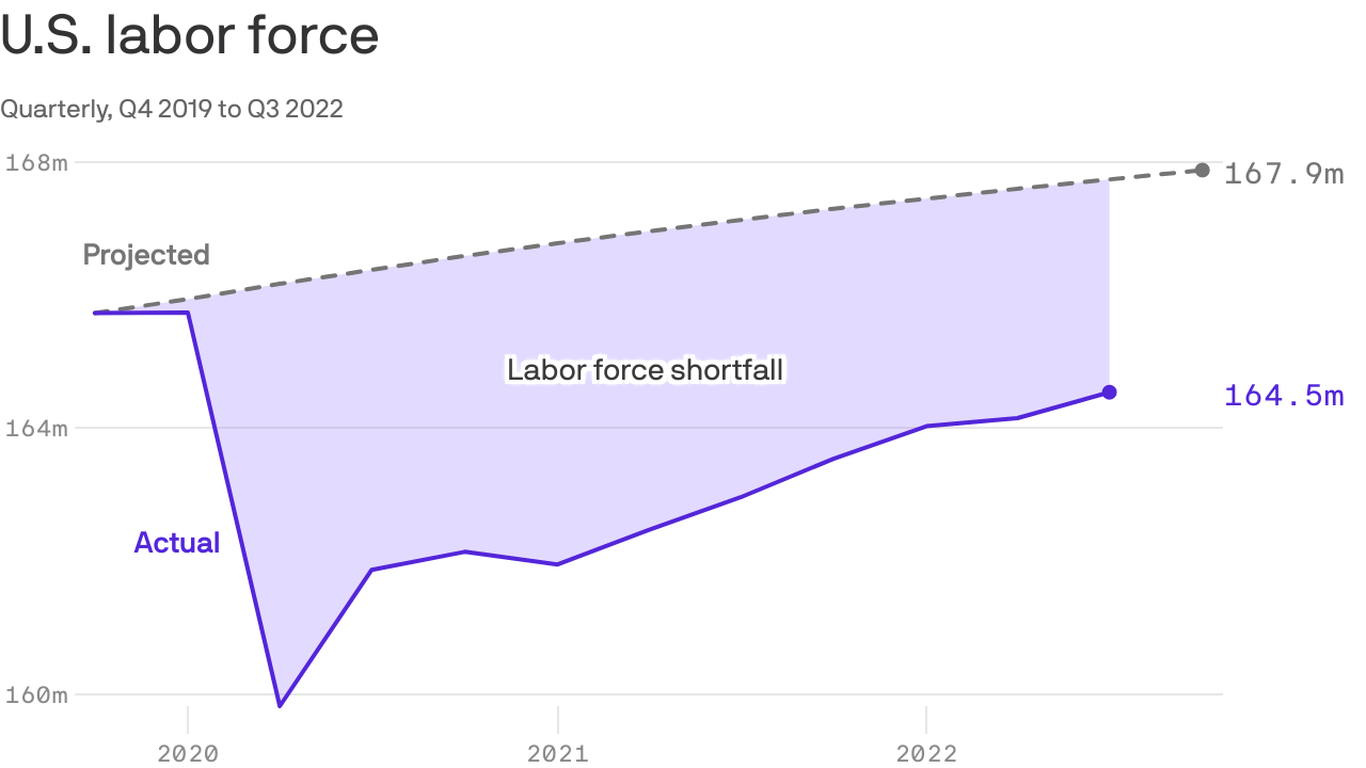
Federal Reserve chair Jerome Powell struck a particularly somber note at his press conference earlier this week when he mentioned that one reason the labor market is so tight right now is that many workers died from COVID-19.
The big picture: Economists have theorized for a while about the impact of COVID deaths on the labor market. Now, research has started to emerge and key public figures like Powell are starting to talk about it explicitly.
Source: Fed chair Powell on the U.S. labor shortage: COVID, retirements, missing immigrants | Axios
Facial recognition and the morality police
As this article points out, before 1979 removal of the traditional hijab was encouraged as part of Iran’s modernisation agenda. Once a theocracy came to power, however, the ‘morality police’ started using any means at their disposal to repress women.
Things have come to a head recently with high-profile women, for example athletes, removing the hijab. It would seem that the Iranian state is responding to this not with discussion, debate, or compassion, but rather with more repression -this time in the form of facial recognition and increasingly levels of surveillance.
We should be extremely concerned about this, as once there is no semblance of anonymity anywhere, then repression by bad actors (of which governments are some of the worst) will increase exponentially.
After Iranian lawmakers suggested last year that face recognition should be used to police hijab law, the head of an Iranian government agency that enforces morality law said in a September interview that the technology would be used “to identify inappropriate and unusual movements,” including “failure to observe hijab laws.” Individuals could be identified by checking faces against a national identity database to levy fines and make arrests, he said.Source: Iran to use facial recognition to identify women without hijabs | Ars TechnicaTwo weeks later, a 22-year-old Kurdish woman named Jina Mahsa Amini died after being taken into custody by Iran’s morality police for not wearing a hijab tightly enough. Her death sparked historic protests against women’s dress rules, resulting in an estimated 19,000 arrests and more than 500 deaths. Shajarizadeh and others monitoring the ongoing outcry have noticed that some people involved in the protests are confronted by police days after an alleged incident—including women cited for not wearing a hijab. “Many people haven’t been arrested in the streets,” she says. “They were arrested at their homes one or two days later.”
Although there are other ways women could have been identified, Shajarizadeh and others fear that the pattern indicates face recognition is already in use—perhaps the first known instance of a government using face recognition to impose dress law on women based on religious belief.
U.S. Army Corps releases cat calendar
Well, this is fun! More whimsy at work, please.
Gigantic cats using hydropower dams as scratching posts are just some of the pawed pinups in a 2023 calendar released by Pacific Northwest-based U.S. military personnel.Source: Yes, a branch of the Army Corps of Engineers did make a cat calendar | Stars and StripesThe photoshopped felines are part of an effort by the Portland, Ore., branch of the U.S. Army Corps of Engineers to portray their work in an entertaining light.
Engineering isn’t always exciting, so the district tries to have a fun social media presence, public affairs specialist Chris Gaylord told NBC’s Today.com on Monday.
“I will use levity whenever I can; that’s what people enjoy,” Gaylord said. “That’s not us dumbing things down. That’s us respecting and not taking for granted the attention of our publics.”
Getting your book published in 2023
This, via Warren Ellis, is a useful resource. I also like that its creator, Jane Friedman, has made it available to be downloaded, printed, and shared “no permission required” (although I wish she’d explicitly used a CC0 license)
When I shared this with a friend, they pointed out that it doesn’t include the ‘kickstarter’ kind of model. While Friedman points out that the chart is primarily for ‘trade press’ (i.e. books with a general audience) there’s a whole different type of approach, which I kind of pioneered a decade ago with OpenBeta and which is more easily achieved these days with platforms such as Leanpub.
(click on image to download PDF)
One of the biggest questions I hear from authors today: Should I traditionally publish or self-publish?Source: The Key Book Publishing Paths: 2023–2024This is an increasingly complicated question to answer because:
Thus, there is no one path or service that’s right for everyone all the time; you should take time to understand the landscape and make a decision based on long-term career goals, as well as the unique qualities of your work. Your choice should also be guided by your own personality (are you an entrepreneurial sort?) and experience as an author (do you have the slightest idea what you’re doing?).
- There are now many varieties of traditional publishing and self-publishing, with evolving models and diverse contracts.
- It’s not an either/or proposition; you can do both. Many successful authors, including myself, decide which path is best based on our goals and career level.
Good writing is good writing
I’ve seen all of the Star Wars films at least once. I’m not big into sci-fi or fantasy, but on the recommendation of seemingly everyone (including my son) I’ve started watching Andor on Disney+.
I’m not even half-way through but it really is excellent, with no ridiculously CGI, just a believable world and an excellent storyline.
Andor largely eschews many Star Wars staples, such as wacky creatures and funny droids, focusing instead on the realities of power and violence. Fantasy author Erin Lindsey, who worked for many years as a UN aid worker, found the show’s depiction of politics to be completely believable. “I think there are clearly people on the writing team who are students of spy novels like [those by] John le Carré and who are students of politics and students of history, who are really looking at how revolution has happened here on Earth and what that looks like,” she says.Source: ‘Andor’ Is a Master Class in Good Writing | WIREDDespite its high quality, Andor‘s ratings have lagged behind Star Wars shows like Obi-Wan Kenobi and The Mandalorian. Geek’s Guide to the Galaxy host David Barr Kirtley hopes that Andor will attract a larger audience in season 2. “It’s so good,” he says. “It deserves higher ratings than it’s gotten so far. And I definitely want to see more shows like this. This is the kind of show—especially the kind of Star Wars show—that I’ve been pining after for all these years. So please let’s all just give it as much support as we can.”
Update your profile photo at least every three years
I think this is good advice. I try to update mine regularly, although I did realise that last year I chose a photo that was five years old! I prefer ‘natural’ photos that are taken in family situations which I then edit, rather than headshots these days.
Unfortunately, some people will make assumptions about you based on a photo, and those impressions paint a picture of how we perceive someone. “The first thing people encounter is the delta” between how you represent yourself in a photo and how you look in person, Marion Dino, a retired human resources executive and career coach explains. “You want to convey that you are trustworthy. Most people aren’t intentionally judging, but we all have unconscious biases, and you leave yourself open to the interpretation of being less than honest if you don’t represent yourself accurately.” Most of the time, a résumé doesn’t include a profile photo, but “recruiters do look at LinkedIn and other social media platforms,” Dino says. “You don’t want to leave the impression that you aren’t authentic.”Source: How Often Should You Update Your Profile Photos? | WIRED[…]
And how often should you update your photos, so they don’t give someone pause when you meet in person? “Profile pictures should be updated every three years unless there is a significant change in appearance. Then, they should be taken sooner.” So, the next time you scroll LinkedIn, log in to a Zoom meeting, or even send an email with a thumbnail profile photo, think about how you want to be perceived, and don’t hesitate to use a picture that fully represents who you are.
Let's make private schools help pay for state schools
I’m delighted to hear about this and I hope the vote passes. It’s a farce that place of privilege should gain tax breaks and have ‘charitable status’. As I’ve said many times before, opting out of state education and the NHS should be, either impossible or ridiculously expensive.
Labour will attempt to force a binding vote on ending private schools’ tax breaks and use the £1.7bn a year raised from this to drive new teacher recruitment.Source: Labour look to force vote on ending private schools’ tax breaks | The GuardianThe motion submitted by Keir Starmer’s party for the opposition day debate on Wednesday is drafted to push the charitable status scheme that many private schools enjoy to be investigated, as the party attempts to shift the political focus on to education.
[…]
Labour will hope the motion will force the government to make its MPs vote down an issue, rather than ignoring the process. A Labour source has previously said: “Conservative MPs voting against our motion are voting against higher standards in state schools for the majority of children in our country.”
Chameleon e-ink car
Most of the things at the annual CES tech show in Las Vegas every year are either pointless (at least to me) or in some way enabling of ever-greater surveillance.
However, this e-ink car really caught my imagination. I’m a big fan of both e-ink (it’s easy on the eyes) and customisation, so this is really in my sweet spot. I did wonder for half a second about a whole movie plot using e-ink for a getaway car, and then I realised that every car these days has a GPS chip and SIM card in it…
Introduced by Arnold Schwarzenegger, BMW’s i Vision Dee caught the attention with its E-ink outer skin, which can change colour in an instant. Don’t expect that on a car you can buy any time soon but it also has a head-up display projected across the full width of the windscreen, which will be available from 2025.Source: Chameleon cars, urine scanners and other standouts from CES 2023 | The Guardian
Level 3 busy-ness
Discovered via Kottke, this ‘seven levels of busy’ makes me realise that I don’t really want to be beyond Level 3 most weeks. Level 4 is OK on occasion.
It’s over a decade since I’ve experienced Levels 5 and 6, I reckon. And I’ve never let things get to Level 7.
Level 3: SIGNIFICANT COMMITMENTS I have enough commitments that I need to keep track of them in a tool because I can no longer organically triage. My calendar is a thing I check infrequently, but I do check it to remind myself of the flavor of this particular day.Source: The Seven Levels of Busy | Rands in Repose
Photo: Dan Freeman
Nick Cave's plans for 2023
The artist Nick Cave has a (newsletter? blog?) called The Red Hand Files in which he answers questions from his fans. Somebody pointed me towards a recent post where he talks about his aim to write and record a new album in 2023.
I love the way he talks about the creative process, and how mysterious it is.
My plan for this year is to make a new record with the Bad Seeds. This is both good news and bad news. Good news because who doesn’t want a new Bad Seeds record? Bad news because I’ve got to write the bloody thing.Source: Nick Cave - The Red Hand Files - Issue #217[…]
Writing lyrics is the pits. It’s like jumping for frogs, Fred. It’s the shits. It’s the bogs. It actually hurts. It comes in spurts, but few and far between. There is something obscene about the whole affair. Like crimes that rhyme. I hope this doesn’t last long. I’m actually scared. But it always does. Last long. To write a song. You hope to God there is something left. You are bereft. I’m going to stop this letter. It isn’t making things better. It’s like flogging a dead horse. Worse. It’s a hearse. A hearse of dead verse. Dead, Fred. Dead.
Walking around like Lionel Messi
I didn’t get a chance to read this excellent article in The New Yorker about Lionel Messi until today. It was published the week leading up to the World Cup Final, which of course Argentina won, making Messi possibly the greatest player of all time (behind Pele? RIP.)
What I like about it is that it shows that ‘work’ doesn’t always look like running around the place looking ‘busy’. In fact, the greatest people at a given thing are usually involved in the background while people are concentrating solely on the foreground.
Messi is soccer’s great ambler. To keep your eyes fixed on him throughout a match is both spellbinding and deadly dull. It is also a lesson in the art and science of watching a soccer match. If you ask any astute observer—an experienced coach or player or tactically tuned-in analyst—how to understand the game, they will advise you to take your eyes off the ball. There may well be an analogous precept, with a German name, in philosophy or art history or mechanical physics. The idea is this: to apprehend the main thrust of the narrative, to really wrap your mind around what’s going on, you must shift your focus from the foreground to the background.Source: The Genius of Lionel Messi Just Walking Around | The New Yorker[…]
[I]f you happen to be watching a match featuring Leo Messi, you’ll notice that something on the order of eighty-five per cent of the time, he can be found off the ball, strolling and dawdling and looking mildly uninterested. It is the kind of behavior associated with selfish players, prima donnas who expend no effort on defense and bestir themselves only when goal-scoring opportunities arise. Messi, of course, is one of the most prolific scorers of all time, with a career total of nearly eight hundred goals in club and international competition. His penchant for walking is not a symptom of indolence or entitlement; it’s a practice that reveals supreme footballing intelligence and a commitment to the efficient expenditure of energy. Also, it’s a ruse—the greatest con job in the history of the game.
A famous aphorism, usually attributed to the Spanish manager Vicente del Bosque, sums up the subtly visionary play of the midfielder Sergio Busquets this way: when you watch the game, you don’t see Busquets—but when you watch Busquets, you see the whole game. Something related might be said about the great Argentinean: when you watch Messi, you watch him watching the game. Another manager, Manchester City’s Pep Guardiola, who coached Messi for four years at Barcelona, has described his walking, especially in the early stages of a game, as form of cartography—an exercise in scanning and surveying, taking the measure of the defense, noticing where the vulnerabilities lie, and calculating when and how opportunities might be seized. “After five, ten minutes, he’ll have a map in his eyes and in his brain,” Guardiola has said. “[He’ll] know exactly what is the space and what is the panorama.”
Spreading joy in 2023
I love the idea behind this list of 52 acts of kindness. Realistically, number 14, 16, and 38 are the ones I’m likely to do (because I already do them!)
14. Pay a compliment “You’re looking nice,” is good. “You have great skin” or “I love your shoes” is better. Someone once told me I had “cute ears” and I treasured it for years.Source: 52 acts of kindness: how to spread joy in every week of 2023 | The Guardian16. Make a mixtape Give someone a curated Spotify or YouTube playlist of stuff you think they would like.
38. Drive kindly If you’re sure it’s safe, flash your lights or wave your hand at someone waiting to cross the road in front of you.


